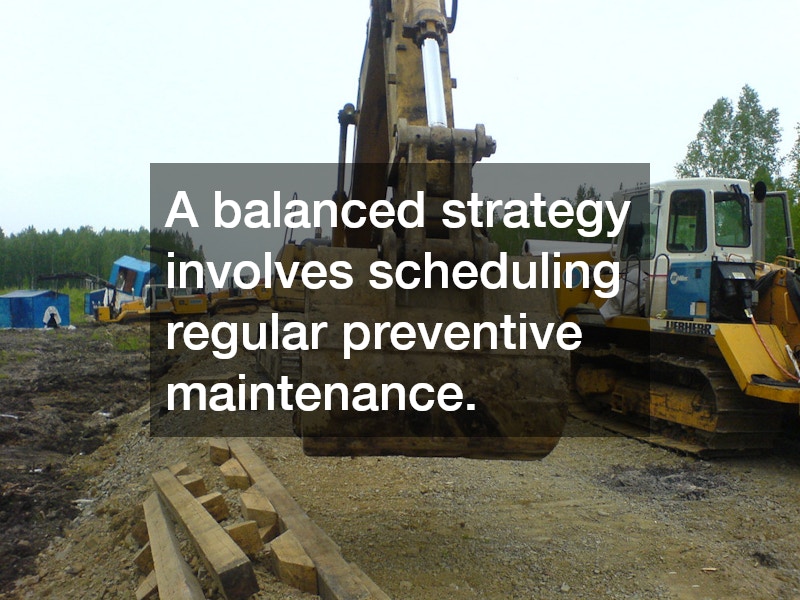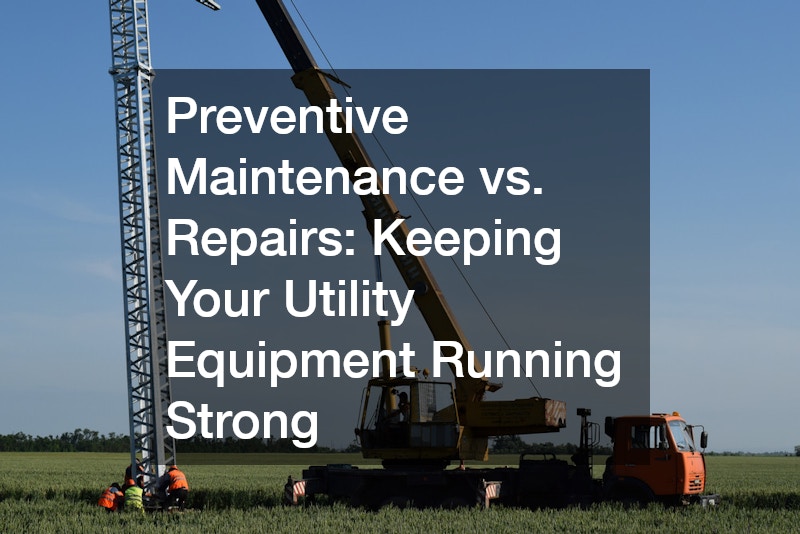
Utility equipment is the backbone of many industries, from energy and water management to construction and telecommunications. Whether it’s transformers, generators, pumps, or other specialized machinery, keeping these systems operational is essential. When equipment fails unexpectedly, the consequences can be costly, leading to downtime, safety risks, and expensive emergency repairs. Understanding the balance between preventive maintenance and reactive repairs can make a significant difference in both performance and long-term costs.
Understanding Preventive Maintenance
Preventive maintenance refers to the routine inspection, servicing, and replacement of components before a failure occurs. The goal is to extend the life of utility equipment and prevent unexpected breakdowns.
Typical preventive maintenance tasks include lubrication, filter replacement, calibration, and visual inspections of critical parts.
By investing time and resources into preventive maintenance, companies can identify minor issues before they escalate into major problems. For example, a small leak in a pump may seem insignificant initially, but left unchecked, it can lead to a complete system failure. Regular preventive maintenance not only reduces the likelihood of costly downtime but also improves overall equipment efficiency and reliability.
The Role of Utility Equipment Repairs
Despite best efforts at preventive maintenance, equipment failures can still occur. This is where utility equipment repairs come into play. Repairs involve fixing or replacing components after a problem has been detected. While preventive maintenance aims to avoid downtime, repairs are essential for restoring functionality when an issue arises.
Utility equipment repairs vary widely depending on the complexity of the system and the nature of the failure. Some repairs may be minor, such as replacing worn-out bearings, while others can be extensive, like rewinding a motor or repairing a hydraulic system. Having a reliable repair strategy in place ensures that downtime is minimized and operations can resume as quickly as possible.
Benefits of Preventive Maintenance Over Repairs
While repairs are necessary, preventive maintenance offers several advantages that can outweigh the costs of reactive fixes. First, preventive maintenance reduces the frequency and severity of equipment breakdowns. By detecting wear and tear early, companies can address issues before they escalate, ultimately saving money on expensive utility equipment repairs.
Second, preventive maintenance promotes safety. Many types of utility equipment operate under high pressure, extreme temperatures, or heavy electrical loads. Regular inspections and servicing help prevent accidents caused by malfunctioning machinery. This proactive approach not only protects workers but also safeguards surrounding infrastructure from costly damage.
Finally, preventive maintenance enhances equipment lifespan. Routine care ensures that components function optimally and are less likely to suffer from premature failure. Over time, this translates to better performance, fewer repairs, and reduced total cost of ownership. Ultimately, consistent preventive maintenance creates a more reliable and resilient operation, giving businesses greater confidence in their utility equipment.
Cost Considerations: Maintenance vs. Repairs
One of the most important factors for businesses is cost. While preventive maintenance requires regular investment in labor, materials, and scheduling, it is often less expensive than dealing with unplanned utility equipment repairs. Emergency repairs can involve overtime pay, expedited shipping for parts, and lost revenue due to downtime.
A well-structured preventive maintenance program can significantly reduce the financial burden associated with unexpected failures. Additionally, it allows for better budgeting and resource allocation, as maintenance tasks are planned rather than reactive. Companies that focus on preventive maintenance tend to experience fewer financial surprises and can allocate resources more efficiently toward equipment upgrades and improvements.
Creating a Balanced Strategy
The ideal approach to managing utility equipment is a combination of preventive maintenance and timely repairs. Even with the most rigorous maintenance schedule, some failures are inevitable due to unforeseen factors such as extreme weather, operational errors, or material fatigue. By proactively integrating both strategies, organizations can minimize downtime, protect their investment, and ensure consistent operational efficiency.
A balanced strategy involves scheduling regular preventive maintenance while maintaining a rapid-response repair team for emergencies. This dual approach ensures that equipment remains in optimal condition while minimizing the impact of unexpected breakdowns. Additionally, tracking maintenance records and repair histories can help identify recurring issues, leading to more targeted preventive measures over time.
Preventive maintenance and repairs both play critical roles in keeping utility equipment running efficiently and safely. Preventive maintenance helps prevent failures, reduces costs, and extends the life of equipment, while repairs are essential for addressing issues that inevitably arise. By implementing a strategic balance between these approaches, businesses can ensure reliable operations, enhance safety, and reduce the long-term costs associated with utility equipment management. Regular attention to maintenance, combined with an effective repair plan, keeps utility systems operating at peak performance and minimizes the risk of disruptive downtime.




